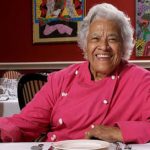| By David Sommerstein
Howes Cave, New York 15 May 2008 Baseball fans around the world have probably heard of two of America’s major league teams, the Cleveland Indians and the Atlanta Braves. Both names refer to American Indians, although the teams themselves have no connection with tribal culture. But few fans have heard the names Charles Bender or Louis Sockalexis, legendary baseball players who really were American Indians. A new exhibit at a museum in New York State hopes to change that. It celebrates the role of America’s first people in America’s pastime. David Sommerstein reports.
The Iroquois Confederacy, a group of six American Indian tribes, once reigned across much of the northeastern United States and eastern Canada. Today, the Iroquois Museum in upstate New York commemorates that legacy. The museum’s cedar shingles resemble the elm bark of a traditional Iroquois longhouse, or meeting place. With major league baseball’s hall of fame a short drive away in Cooperstown, it’s the ideal meeting place to tell the largely invisible history of American Indian ball players. Inside, you’re greeted by more than a dozen black-and-white photos of players with American Indian ancestry. Many are household names. Exhibit visitor Rosemary Joyce looks them over in amazement. “Bucky Dent and Johnny Bench and Early Wynn… I didn’t know there were this many American Indians in baseball. In fact, I was surprised at the names. Names I always heard growing up when I was a teenager.” There are less famous names too. Louis Sockalexis, a Penobscott Indian from Maine, became the first American Indian to play in the major leagues, with the Cleveland Spiders in 1897. Sockalexis was a victim of alcoholism and the racist taunts of fellow players. His career lasted just three seasons. There’s Charles Bender, an Ojibwa from Minnesota, one of two American Indian Hall of Famers. His huge hand-carved bat is one of the collection’s treasures. At least 47 men of native descent have played in the big leagues. A full ten of them were simply called “Chief.”
Erynn Ansel-McCabe, the museum’s director, says their stories haven’t been told yet. “I want everyone to know about these stories in order to [sort of] add to the richness of the baseball game itself.” At the exhibit’s official opening, organ music helped create that ballpark feel. So did the food – hot dogs and beer. Mike Tarbell, a Mohawk with a graying ponytail and a beaming smile, spins a baseball in his right hand. “Thirty-four years ago, I put this ball down,” he muses. ” I just remembered the things I could do with this. How I could make it dance through the air.” Tarbell was a star pitcher for a semi-pro team in Syracuse. But his career was cut short by injuries suffered during his tour of duty in Vietnam. Today is actually the first time he’s picked up a baseball in 34 years. “The smile came back. Even if I had a bad day pitching, it was still a good day because I was playing the game.” Tarbell comes from a family of ballplayers, whose history may be the most fascinating part of the exhibit. Three of Tarbell’s uncles played baseball for the Carlyle, Pennsylvania, Indian boarding school. Beginning in the late 1800s, American Indian teenagers were forcibly taken from their families to be civilized, as it was said, at schools far from the reservation. For boys, baseball was a tool of assimilation. Valerie Tarbell, Mike’s cousin, stares at a photo of her grandfather Joe. “He died before I was born,” she says. “I never knew him, but I heard so much about him, and to see this just brings him more alive to me.” She turns to a team photo of the Carlyle Indians. Eleven boys stare stoically at the camera. “They don’t look too happy,” she points out. “They’re not smiling and it was my cousin Mike who said, ‘Well, of course they’re not smiling, they were at the Indian school.’ They were brought there. They didn’t necessarily want to be there, but there’s also intensity about them, that the game was so important. I never realized how important it was.” The Indian schoolboys took refuge in baseball to survive. Like many of them, Joe Tarbell eventually escaped and returned to his reservation. He brought baseball with him. By the time Jackie Robinson broke baseball’s color barrier in 1947, dozens of native men had already been playing in the major leagues. Exhibit curator Stephanie Schultiss says they experienced a mix of racism and acceptance. She points to Hall-of-Famer Charles Bender’s huge bat and says he’s a perfect example of that. “I have one quote from Bender where he’s obviously faced hecklers on the field, and he says, ‘You ignorant, ill-bred foreigners, go back to your own land.’ But then in one very long quote, he says how good baseball was for him and how everyone treated him well while he was playing baseball, so you’d have some good times and some bad times.”
For decades, Native American stereotypes pervaded major league baseball. Team names like the Cleveland Indians and the Atlanta Braves still carry that legacy. But the names on everyone’s lips today tell a new story… two rookie phenoms at the heart of baseball’s biggest rivalry: Jacoby Ellsbury and Joba Chamberlain. Jacoby Ellsbury is Navajo. He plays centerfield for the Boston Red Sox. Joba Chamberlain is half-Winnebago. He plays for the New York Yankees, just south of here. Chamberlain exploded onto the major league scene last fall with a 160-kilometer-an-hour fastball. And he has talked proudly about his native heritage on the reservation in Nebraska. “We have family there, so we always went back for pow-wows and we always went back for everything, so it was always a part of my life and always has been significant, and as I got older, it definitely got more significant.” He’s contributed star-power and two signed balls to the Iroquois Museum’s exhibit. “I hope [the exhibit] opens a lot of people’s eyes,” he says. He wants people to realize that there’s more to Native Americans than traditional pow-wows and modern casinos. “Hopefully it makes people realize that we are all equal.” The folks at the Iroquois Museum have high hopes for today’s American Indian players. Maybe they can spark a baseball resurgence in Indian Country, where basketball and lacrosse – an American Indian game from this part of the country – are more popular. And maybe, says curator Stephanie Schultiss, Chamberlain and Ellsbury can help tell the real story of native people in America today. “Native Americans* do exist. They didn’t die when the cowboys and Indians were fighting each other. They don’t wear feathers anymore, so this is their platform to be good at what they do as well as explain who they are and what kind of people Native American people are.” The exhibit, Baseball’s League of Nations: A Tribute to Native American Baseball Players, is on display at the Iroquois Museum through December. *Native Americans is synonymous with American Indians in the U.S.
|
|||
|











